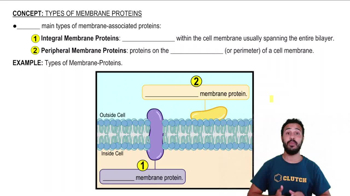Multiple Choice
In terms of cellular function, what is the most important difference between prokaryotic and eukaryotic cells?
5177
views
3
rank
 Verified step by step guidance
Verified step by step guidance



 5:54m
5:54mMaster Prokaryotic & Eukaryotic Cells with a bite sized video explanation from Bruce Bryan
Start learning